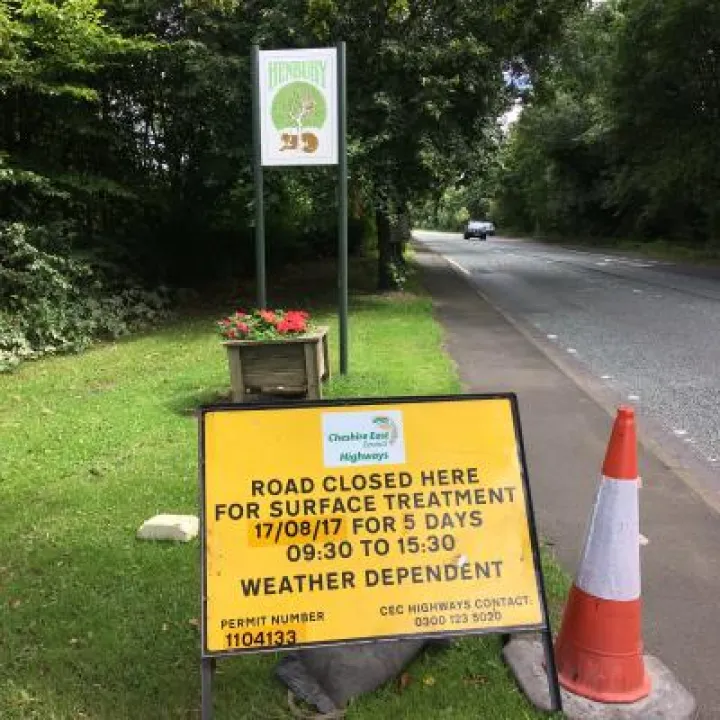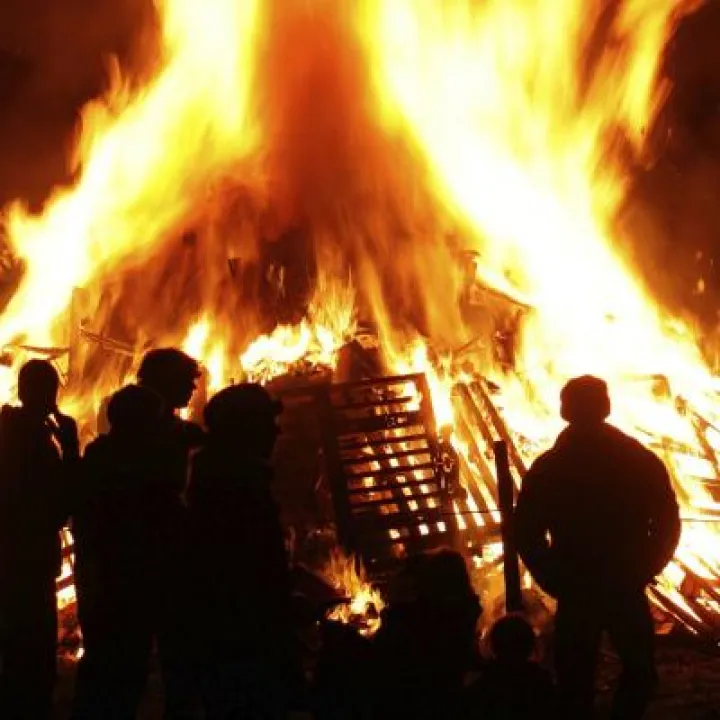







Occasional Notes from a Dog Walker
A few months ago I noted that the field opposite Mount Farm had been sown and harrowed. We thought it was a grain crop but grass grew and was cut for sileage early in the month! So was the mini-flood field behind William's Way and Henbury rise.
On our morning walk Dot the Dog and I saw that the unmown fields were again turning pink in places – the patches of common meadow grass were coming into flower. The earlier-flowering grasses had already set seed and were browning off. The seasons were clearly changing.
Our local magpies seemed to be setting a puzzle for their youngsters – they buried titbits from the bird table in a container of dwarf sunflowers in the garden and the juveniles were expected to find them and dig them up – interesting but messy.
In the first week of the month we came home and saw dragonflies winging across our front garden. They do visit our little pool at the back but I don't think we've seen them out front before. Our young frogs were roaming – I became very careful when lawnmowing (in the current weather happily a not-very-often chore!).
On a very hot and humid (at 9 o'clock) morning Dot the Dog insisted on dragging me through a large patch of thistles following a wildlife track in the field by Whirley school. We put up a cloud of Small Tortoiseshell butterflies. A good job I wore my wellies – my legs would have been pincushions otherwise!
A few days later a wet and windy day. I watched a couple of crows (I thought rather than jackdaws because they looked too big) doing aerobatics. They soared up on spread wings and then dropped doing cartwheels almost to ground level before catching the breeze in their wings and going up again – and again, and again, seemingly just for fun. As usual the sentinel jackdaw alerted its pals when I replenished the bird table.
Mid-month wet and windy days ruled still. The greater-spotted woodpecker family made us a regular stop on their feeding round and we saw two adults and two juveniles on the nut and seed feeders at various times. They had found they could get their beaks through the squirrel guard on one of the feeders to get at seed, so they had a menu choice.
In the meantime an enterprising young squirrel also discovered that "squirrel-proof" feeders were not so – it had found it could get a paw through the guard and pick out seed "by hand".
Autumn flowers showed (in high summer!). Japanese anemones came into flower when we would not usually have seen them until mid or late August. Some dozy wasps about too – much too early.
If you are squeamish do not read the next paragraph – but of course you now will!
A sunny late afternoon got Dot the dog and me out after a showery day. There was a scattering of pigeon feathers near the kissing-gate into the field beside the school. At first I assumed it was a sparrow hawk kill due to the way the feathers were scattered. On our way back to the gate however we found a pair of wings and legs too – maybe the hawk had had its fill and the fox or badger did the rest – S said there had been a partial corpse there the afternoon before.
DtD and I watched a trio of crows – two adults digging in the ground, presumably for "leather-jackets" (crane fly/daddy long legs larvae) and feeding a juvenile. The latter was obviously under tuition and was trying hard but without much success (yet). In the garden the birds had consumed 3kg of sunflower seed (helped a bit by the enterprising squirrel) and a kilo of peanuts in a week! Must stop being so kind!
The cattle were streaming through a gap in the fence and hedge between the little top field and the big field moving off to their evening quarters. I hope the gap was intended by the farmer (although there was a perfectly good open gate higher up) and not an act of vandalism. Some dog owners don't seem to understand that fences and hedges are there to keep stock in rather than people (and dogs) out...
We came home to see a Red Admiral butterfly sunning itself on the bench on the patio, and several whites flew by.
A wet weekend followed – dawn to dusk (and beyond) rain, often heavy. By nine o'clock in the morning on the Saturday the small field-flood had already reappeared and the larger field-flood had been topped up. Dot the Dog voted with her paws – after getting into the fields she rapidly found a good spot to do the essential things, put her head down and dragged me back towards home; I was not displeased!
A couple of drier and sunnier (at times) days followed. Three swifts did their aerobatics over the road and a heron flapped and glided over in its lazy way – we initially thought it was going towards Redesmere but it changed course and I suspect dropped down at "Poolside". The sparrowhawk swooped on the smaller birds on the feeders – I suspect it got its tea...
Out with Dot the Dog one late July morning she was snuffling around the bases of the trees on the grass verges on Hightree Drive. I noticed a small group of Fairy-ring Champignons (edible) at the base of one tree – I wouldn't try eating them because (a) it's a popular "wee-mail" spot for dogs and (b) my book tells me it is easily confused with a poisonous mushroom of similar appearance!
The flowers of the patch of thistles over the fields where DtD put up a cloud of butterflies a few weeks ago were finally going over but for some weeks and from some angles if there were sunshine they looked like a huge island of pinkish-mauve in the middle of the green-and-browning grass.
Fellow dog-walkers often now tell me about things they have seen. On the morning I spotted the champignons (or similar) our neighbours whose house backs on to the field between Hightree Drive and the track to Moss Cottage/Mossways told me they had seen a barn owl flying across in the late evening. I hadn't seen one recently but S did earlier in the year on Dark Lane. They also said they had seen a ferret but on reflection I wondered if it was a stoat or weasel – ferrets found in the wild are usually escaped domesticated creatures and I had certainly seen a weasel over the fields in the last couple of years.
Dozy (and therefore likely to sting) wasps appeared – early. They usually come in late August or early September as the new queen leaves the nest to look for hibernation quarters and they are left to their own devices.
The lavender bushes in the garden literally hummed with bumblebees of different kinds. I counted 14 on a single plant – mostly buff-tailed but one or two I couldn't identify, even with the aid of my book. One or two honey bees as well, but I don't know where the hives are.
Last weekend of the month brought mixed weather. Flurries of white butterflies in the garden – small whites I thought but they were not still long enough for me to see clearly, however they seemed to have the right wing spots. Tadpoles (big!) in our little pool – we thought perhaps "toadpoles" (pun intended) but the books suggest these will be late-hatcher frog tadpoles that will hibernate and mature next spring.
As Dot the Dog and I came home on the path from Moss Cottage to Henbury Rise I noticed in the root-fork of a beech tree what looked like a discarded string of pearls. I went back later and used an app on my phone ("Picture This" that identifies all sorts of wild flowers and fungi) and found it was a fungus of the ink cap family (no common name); within a few hours fresh growth of the fungus had appeared on nearby roots – and everything was gone within 72 hours!.
As ever
Horrid of Henbury
